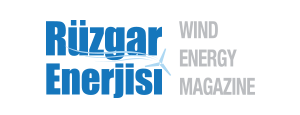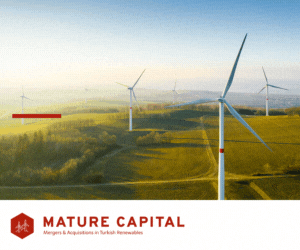Genel
The future is blowing in the wind

The wind energy sector has applauded the release of the 2016 update of the Integrated Resource Plan (IRP) and the accompanying public consultation process that will enable all South Africans to engage electricity planners on investment choices – transparently and with a focus on least-cost.
South African Wind Energy Association (SAWEA) CEO Brenda Martin welcomes the update from the Department of Energy. “It’s common knowledge that the IRP has been outdated since 2013 and many of us have been feeding into the ongoing consultation process of this policy since 2010. The generous allocation given to wind here will assist with increasing confidence in the market and ensures that we can see a clear picture of how our industry will develop as make the transition toward decarbonisation.”
“The IRP is based on a set of important assumptions which inform model outputs and which in turn determine the country’s electricity investment decision-making to 2030. Two of the most important assumptions from SAWEA’s perspective are demand and renewable energy costs. The assumptions made on these have a direct bearing on what the model selects for investment. The IRP2016 update published today clearly takes more recent data related to these assumptions into account, and in addition, extends the planning horizon to 2050,” she continues.
The Wind Industry has extra cause to celebrate today as the IRP draft lays out a clear path for significant future expansion, including an allocation 37,400 megawatts for wind energy development by 2050.
The 2013 Update report has still not made it into policy but it is hoped that the latest 2016 Update report will be realised within the timeframes put forward by the department – with promulgation of the updated IRP shortly after March 2017.
Between Rounds 1 and 4 of the Renewable Energy Independent Power Producer’s Procurement Programme (REIPPPP) the cost of wind and solar energy has fallen drastically. It is now unequivocally the cheapest, fastest form of new build energy in South Africa. Both wind and solar are now averaging R0.62 per Kilowatt Hour (kwh) having fallen from R1.15 per kwh and R3.65 per kwh respectively in Round 1. This price is significantly lower than the tariff prices for coal from Independent Power Producers (R1.03 per kwh), Eskom coal (R1.05 per kwh to R1.16 per kwh) and nuclear power which is estimated at between R1.17 to R1.30 per kwh.
Other outstanding elements of the report include:
•Within Base Case observations the system only commissions new capacity in 2022, with this capacity coming from a combination of wind, solar photovoltaic and gas.
•New nuclear is only commissioned by 2037 (effectively 2 Units or 1.36 GW) with 20.4 GW added by 2050. Previously, the plan had been to add 9.6 GW of nuclear between 2023 and 2029.
•As well as 37.4 GW of Wind, 17.6 GW Solar PV has been allocated in the draft – these are additional to the existing allocation of 13 GW of renewable energy by 2025, through the Renewable Energy Independent Power Producer’s Procurement Programme.
•35.2 GW of gas has also been allocated in the new draft
•The extended allocations are envisioned by 2050, with new build for these technologies commissioned at a steadily growing rate, from 2021.
•As the share of renewable energy technologies in the system grows and coal plants are decommissioned, water consumption and emissions both decrease.
“We urge South Africans to engage with the IRP public consultation process so that there can be little doubt as to the public priority placed on rational, transparent electricity planning and due process and so that the IRP2016 can be sure to be adopted as policy before June 2017,” concludes Martin.
-

 Events5 years ago
Events5 years agoCanada and Turkey women working in the renewable energy sector in met
-

 Manufacturers of wind turbines5 years ago
Manufacturers of wind turbines5 years agoGE’s Haliade-X 12 MW prototype to be installed in Rotterdam
-

 Operations and Maintenance6 years ago
Operations and Maintenance6 years agoGENBA is on the rise; another milestone passed by in global existence
-

 Genel9 years ago
Genel9 years agoEWT launches the DW61, It’s most efficient and high energy producing wind turbine
-

 Genel9 years ago
Genel9 years agoInternet of things will empower the wind energy power plants
-

 Turbine Manufacturing6 years ago
Turbine Manufacturing6 years agoİğrek Makina focused on developing and producing Machine Tools and Wind Energy Turbines
-

 Energy management systems5 years ago
Energy management systems5 years agoDemand/Supply – Renewable energy with guarantees of origin (GO)
-

 Events5 years ago
Events5 years agoKey Players from 10 Nations will Show Their Strong Positions at APWEE
-

 Manufacturers of wind turbines5 years ago
Manufacturers of wind turbines5 years agoThe Nordex Group receives first order for Delta4000 turbines from the USA
-

 Manufacturers of wind turbines4 years ago
Manufacturers of wind turbines4 years agoENERCON installs E-160 EP5 prototype
-

 Genel8 years ago
Genel8 years agoZorlu energy envisages a bold new future based on renewables
-

 Manufacturers of wind turbines6 years ago
Manufacturers of wind turbines6 years agoENERCON and Lagerwey together develop two new WEC types















